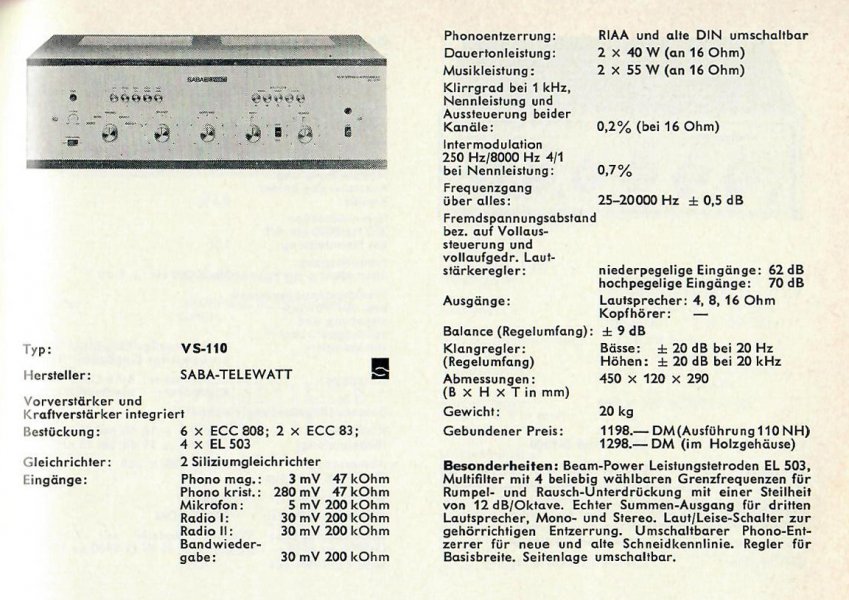actually I ordered his 10K OPT for a GM70 mono project when we met
Just shipped from Serbia on dec 2nd
Just shipped from Serbia on dec 2nd
completely correct In 1967 the last newly developed tube el 503 was manufactured, saba tried to defy the transistor with this amplifier. the distortion values are still so good today, there is nothing better.I completely disagree with that notion, as today we know how to design better circuits. If you look closely, the state of the art of the sixties was not exactly advanced in many areas.
This is not about being cocky. The simple fact is - the development of tape electronics stopped 40-50 years ago. We can only guess what it would look like now, had it continued. The real areas of advancement and state of the art since then has been the instrumentation.

actually I ordered his 10K OPT for a GM70 mono project when we met
Just shipped from Serbia on dec 2nd
I completely disagree with that notion, as today we know how to design better circuits. If you look closely, the state of the art of the sixties was not exactly advanced in many areas.
This is not about being cocky. The simple fact is - the development of tape electronics stopped 40-50 years ago. We can only guess what it would look like now, had it continued. The real areas of advancement and state of the art since then has been the instrumentation.
That is not the point... there will always be people who love vintage stuff, be it music, movies, or sound. I myself love tinkering with my old Ampexes - one is dated 1958... but I will never say they produce better sound than the ATR-102 with external preamp.I dont know if its that straightforward / easy .
There are several people on this forum who like old horn designs .
I suppose these are 50 s / 60 s designs i m not exactly sure .
Those are people that can buy anything they want , incl modern horns with "better " technology and still they buy the old ones , how do you explain that ?
First, the opening statement here is false; no wonder he came to a different conclusion.The scientific opinion is that global and local feedback theoretically are the same. My tube amplifier practice shows that this is certainly not the case.
There is for instance a major difference if the output transformer is inside or outside the feedback loop. To briefly summarize my observations on tube amps: Global kills details while local keeps those alive. Therefore, my present design strategy is: per amplifier section, first cure its “faults” by means of local feedback. This article shows how to do that. One extra remark: No feedback at all keeps details alive, however, it can sound uncontrolled. Local feedback keeps all the details alive and sounds clean and controlled."
I totally get that.Just for clarity - the words, quoted above, belong to Menno, not me.
ready for sailing season in april.....will focus on getting M15 up and running and my GM70 amp projectwow then you will be a superman 'once the component breaks in'
Happy for you! It is incredible how well developed some of those procedures are today.hi folks..back in business with new ss hip joint kit
went like a dream.....running smooth as an A80 already...
Presumably, we are talking about someone who already has the A810.
I think I would consider such an option.
| Steve Williams Site Founder | Site Owner | Administrator | Ron Resnick Site Owner | Administrator | Julian (The Fixer) Website Build | Marketing Managersing |

